
The targeted killing of Maj Gen Soleimani through a drone attack has set the social media abuzz. However, this comment by one veteran was reflective of our situation. “See the use of modern intelligence used to kill a general. I hope they do the same with ISI generals. We just talk, we cannot do it. Just some strike and much is made from it by the political class for their political gains. Our generals need to be thorough professionals, someone like Sam, Thimmaya or Sundarji. Present lot are keen to join politics after retirement’. That set me thinking and reflecting on the strategies and tactics used by various countries to achieve their political ends. While some have full spectrum capability to wage war others have limited spectrums. However, what is interesting is that the way they develop and deploy their capabilities in their context to good effect. In this article I have attempted to characterise some nations and the way they wage wars. To some extent I am aware I am skimming the surface. It needs a deeper institutional study to get the correct picture. However, it gives major pointers as to where we are.
USA – The Full Spectrum War Wager
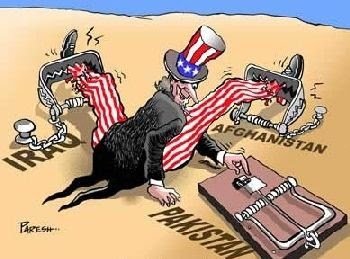
In my opinion US plays all formats – tests, one dayers and T20s without any reserve. It has developed and owns a mighty hi-tech military machine encompassing, air, land, sea, space and cyber space. It uses its enormous hard and soft power unhesitatingly when the need arises to protect and project its interests. Shock and awe are part of the game. It has not hesitated to carry out black ops through outsourcing to non-state contractors/actors. It has combined military operations with political end games ranging from regime change to supporting dictators and autocracies to meet its ends. In the Asia Pacific region, it is playing a test match with China through conventional capabilities. It is clearly attempting to keep China confined to the first Chain of Islands in the South China Sea. In the shifting sands of the West Asia, it is in a constant One Day game. The stadia have been – Iraq, Lebanon, Syria, Libya and of course Saudi Arabia. It is also adept at the T20 format exemplified by two operations – the transnational operation to knock out Osama bin Laden in Abbottabad and the recent killing of Soleimani. All this is backed by an extensive all-pervasive intelligence network which ranges from humint to elint through to space-based int. Very importantly it has not demurred from taking causalities. It follows the motto – No pain No gain.
China – The Rich Go Player
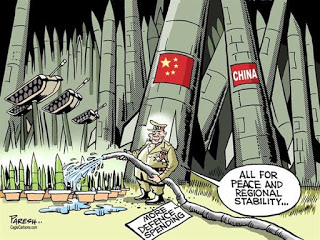
China is constantly playing GO through a policy of unrestricted warfare. Always seeking a position of advantage, cornering its opponents and squeezing their life out. End ambition–sole superpower. China has been waging its conflicts in test match style- conventional at two levels. The first level is it has been developing hi-tech conventional weapon systems which it has not yet used. This capability is the implied threat to scare people. This implied capability is force multiplied by selective propaganda to gigantic proportions. That makes China a shark in the region. However, this capability is untested and inexperienced. Very significantly, China has shied away from using it. In fact, it has backed off from doing so. At another level, the Chinese test match is all about disruptive technologies. Its rate of development and deployment of disruptive technologies and militarisation of its economic power through cheque book diplomacy allows it to execute the silent soft kill to control nations. That intent is very clearly laid out in the Chinese White Paper on defence with its emphasis on surveillance, cyber, AI, space and electronic domains. Its huge foray to eventually militarise 5G technology and Data spells trouble for India. Further it is adept at using catspaw to keep it adversaries and contestants off balance. Using Pakistan against India and North Korea against US are prime examples. The ‘String of Pearls’ is only a manifestation of GO theory to leave very little manoeuvre space for India. If one digs deeper, my guess is that it has been using Iran to keep US tied down. No pain. Only gain.
Pakistan Army– The Bankrupt Outsourcer
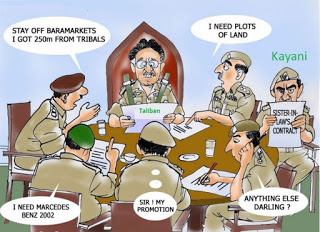
The cash rich Pakistani Army perpetually bankrupts the nation. It is the eternal outsourcer of military affairs on the frontline. It is constantly at war with itself and with everyone. It outsources itself to the highest bidder. Thereafter it outsources its tasks to jihadi non-state radicals to carry out state sponsored terrorism. It is the most professional Army never to have won a war despite choosing the time and place of its conflicts. Described variously as the most dangerous force on earth and most untrustworthy, the Pakistan Army’s Ways of War are well documented by Christine Fair. It imagines itself to be a test player when it brandishes its nuclear sabre. However, all its conflicts are fought in the T20 mode. Fast, quick, aggressive, innovative, violent and unscrupulous. It gains tactical advantage but always loses strategically. It has however mastered the ability to use religion as a weapon, created a sword arm through its intelligence agency and is adept at nuclear blackmail. It is inveigling itself to China off late after going through a military divorce with US. However, that might not work in its favour fully since it will be arm twisted to do US’s bidding whenever needed. A harlot will be used in the end by everyone. All pain. No gain.
Iran – The Shadowy Innovator
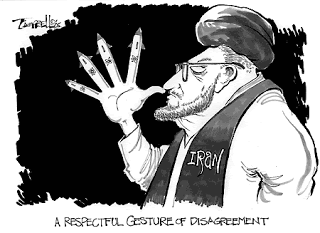
Iran is emerging from the shadows and punching above its weight despite the oil export embargo, US sanctions, or curbs on nuclear research. It does not have nuclear or space capability or a great military machine. Yet, it plays the shorter formats well above its height due to innovative war waging ways. Examine the innovation and use of Explosively Formed Projectiles (EFPs) which fire a molten copper slug able to penetrate armour. They have wreaked havoc and instilled dread in American troops since 2004. Examine use of limpet mines in the Gulf to sink oil tankers. Examine the Aramco attacks by drones. The Americans have all along known that all these are made in Iran professionally. Now they have had the gumption to attack US bases deep in Iraq. Its hallmark has been innovative and out of box use of technology deployed at least cost and with spectacular effect. Examine the Quds Force which the US considers to be a combination of C.I.A. and Special Forces. Consider its ability to militarise Shiaism and stitch an overseas Shia based alliance consisting now of Iraq, Syria, Lebanon and Yemen among others which is feared by Sunnis and Saudis in particular, respected by US and keeps Israel on its toes. All this has been possible through a close-knit relationship between its military and political structure. Clearly Iran has been using war as politics by other means and politics as other means for war. It has consistently cocked a snook at its adversaries and has pursued its nuclear goals openly. It is not without reason that President Trump and many before him have wanted to sort out Iran. They have not been able to do so since the days of Jimmy Carter when US failed in its attempt to free hostages held by Iran in the aftermath of their revolution. Some pain. More gain.
India- The Democratic Player
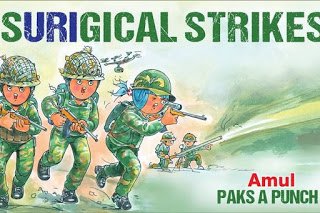
India is a nuclear, space and missile power of consequence. Yet as conventional power it is in relative decline. As an unconventional power player, it is in its infancy. All put together it is worrying. That is entirely attributable to the democratisation of Indian war waging capability. Everyone – Army, Navy, Air force, Coast Guard, PMFs and Int Agencies have their own threat perceptions, doctrines and capabilities to fight their respective battles within the broad confines of a hazy two and half front theory which has never been enunciated. Our security apparatus resembles the erstwhile Indian test match cricket team. Lots of gifted players. Many scoring hundreds for individual fame but the team cannot win. Our generals, admirals, air marshals, bureaucrats, scientists, industrialists and politicians are those individuals who play on the backfoot and leave the ball at every opportunity. When it is time to really play, they realise that the pitch has deteriorated and is unplayable. However, our antecedents and battle experience of the Bangladesh blitzkrieg and Kargil destruction of Pakistan have stood us in good stead. Our delayed foray into the shorter formats, after suffering serious causalities, have been contentious. The well-executed surgical strikes signalled a strategic shift. However, they have not made the desired strategic impact. Overall, their outcomes were limited to domestic political fortunes. India must take the fight across and away from its territory unambiguously. The political act of abrogation of Article 370 has done more to convey a potent threat across than any military operation. Overall, we have tremendous potential but lack the cohesion to convert it into a maleficent kinetic. On home ground we are unbeatable like the Indian cricket teams of the yore. We need to start winning overseas if we are to become a $5 trillion economy in the next few years. We have punched far below our weight. Lot of pain. Some gain.
The Indian Way of Future War Waging is Mental
When seen across the range of nations, there is no doubt that each nation develops and deploys its strengths as per its national interests. It is also very clear that all nations do not need full spectrum capability to promote their national interests. Nations need resolve and internal cohesion to do what they are supposed to do. When seen in this context, India, despite all its strengths comes across as a soft nation. One thing for sure. When we rise to be a $5 trillion economy and with it assumes added global status, we will need a military security apparatus which is far more robust than what it is now. Let us not put too much hope on the CDS alone. He needs all-round support if he is to succeed. In his success lies India’s success. I think as the principal military advisor to the government his role in cementing the prevalent fissiparity and ensuring cohesion will be critical. We need to think and act differently. Get out of the boots on the ground approach. Embrace low cost indigenous technologies which are effective rather just being hi tech. We need to harness our potential and innovate. Democracy and syncretisation of religion are our two great strengths. Can we use them strategically? After all both our nuclear neighbours have vast swathes of territory which are vulnerable to these factors. We need to be imaginative and break our mental and procedural shackles. These are the challenges ahead. Will the India military apparatus rise to the call of the hour or will the CDS be another pole in the multipolar and underperforming military set up of India.








